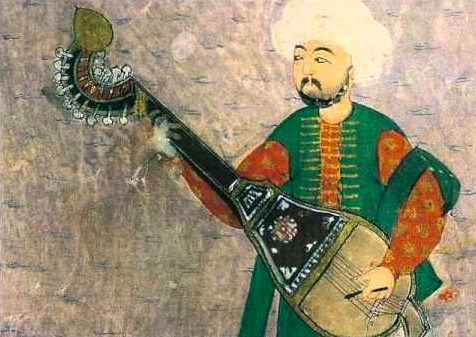

The music of the Ottoman Turks had in many ways become assimilated to that of the Arabic cultures they had conquered in the 10th and 11th centuries. Music tended to feature a solo vocalist or instrument with a small ensemble for accompaniment. The texture of Ottoman music was generally monophonic, with extensive ornamentation and improvisation using a makam (cf. the Arabic maqam.)
There was also a notable musical tradition among the Janissaries, an elite group of Christians who were enslaved as children and raised to serve as the personal bodyguard of the Ottoman sultan. Janissary music incorporated brass instruments like the natural trumpet, the zurna (a loud shawm), and extensive percussion instruments including timpani, bass drums, and cymbals (notably, the Turkish word for "cymbal" is zildjian.) Despite the antagonistic relationship between the two cultures, the alla turca style, especially the percussion section, would later become very popular in Europe. It is arguable that the Ottoman military band is the direct predecessor of the modern marching band.
Nihavend Peşrev (1554)
Üsküdara Giderken (1819)
Janissary March